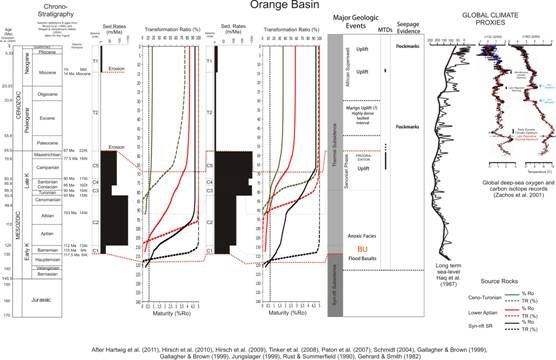Controlling mechanisms of generation ad leakage of natural gas during the post-rift history of the South Atlantic. A supra-regional approach
Scope
During Late Jurassic/Early Cretaceous times, the diachronous opening of the South Atlantic, led to the creation of a system of conjugate passive margins off-shore eastern South America and western Africa. Following the continental break-up, the evolution of the South Atlantic is characterized by different geologic histories and marked diachronisms between north and south, and eastern and western margins. The last 50 years of extensive hydrocarbon exploration in this area indicate that the resulting off-shore basins contains a wide range of source rocks, reservoirs and trap types defining (in some cases) world-class hydrocarbon provinces. In addition to hosting immense reserves of hydrocarbons, several sedimentary basins along eastern and western margins of the South Atlantic depict abundant seafloor features associated with both past and present-day active liquid and gas hydrocarbon leakage. Such ancient to nowadays gas-releases events into the Earth system (Hydro- & Atmosphere) possible overprinted the climate record. Thus, studying the major geological events related to generation and migration of hydrocarbons and modeling the timing and rates of gas leakage will provide a supra-regional perspective on the driving mechanisms of thermogenic gas emissions. Further comparison with paleo-climate archives should allow to weight the effect of this process on Earth's climate.


